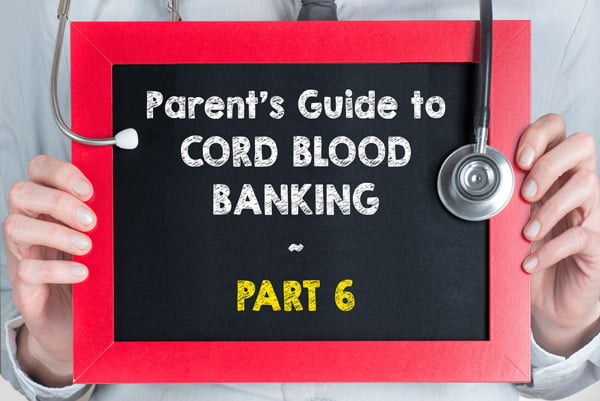
This is the fifth article in a series dedicated to learning about umbilical cord blood stem cell storage. It aims to educate expectant parents by providing them a comprehensive guide to cord blood banking that will help them make an informed decision.
In addition to the stem cells found in umbilical cord blood, there are stem cells in the surrounding umbilical cord tissue. Researchers are just starting to understand the many potential applications for these stem cells. In part 5 of the series, we will take a closer look at umbilical cord tissue.
Umbilical cord blood contains valuable Hematopoietic Stem Cells (HSC) and Mesenchymal Stem Cells (MSC). HSCs are precursors to blood cells and can be used in the treatment of more than 80 illnesses including cancer, metabolic disorders, blood disorders and immunodeficiencies.
In addition to the stem cells found in the cord blood, there are stem cells in the surrounding tissue. By saving both the umbilical cord blood and the umbilical cord tissue, you can maximise the variety and quantity of stem cells which are to be preserved.
What types of stem cells are in the cord tissue?
Umbilical cord tissue is a rich source of Mesenchymal Stem Cells (MSCs) and Very Small Embryonic-Like Stem Cells (VSELs). The cord tissue also contains a number of growth factors and hormones. Finally, cord tissue contains perivascular cells and vascular endothelial cells which may be of therapeutic use in the future.
Unlike hematopoietic stem cells, mesenchymal stem cells can differentiate into more types of cells and tissue including cartilage, muscle, tendons, bones, stromal cells, fat cells and neurons. Mesenchymal stem cells can also be self-renewing and researchers have already discovered ways to grow more stem cells from a sample while maintaining multi-potency (the ability to change into other cells). These two factors mean mesenchymal stem cells have great potential in the field of regenerative medical. Regenerative medical techniques aim to repair damaged or diseased human organs, cells and tissue.
There are dozens of clinical trials underway using mesenchymal stem cells to treat conditions including:
- Spinal cord injuries
- Autoimmune disorders
- Type 1 Diabetes
- Lupus
- Stroke
- Cardiovascular disease
- Parkinson’s disease
- Rheumatoid arthritis
- Alzheimer’s disease
- Lung cancer
Cord tissue–derived mesenchymal stem cells are also less likely to be rejected than stem cells from other sources. Some research has suggested that proteins called cytokines appear when mesenchymal stem cells derived when cord tissue are used. Cytokines play a role in cell communication, immune system interaction and driving cells towards sites of infection, inflammation and trauma.
Why should I store the cord tissue with the cord blood or is it sufficient to just store the cord blood?
While cord blood does hold some mesenchymal stem cells, the cord tissue is a far richer source. If you are interested in maximising the number of mesenchymal stem cells available to take advantage of future medical technologies, it would be wise to store both the tissue and whole cord blood.
Cells4Life offer both volume-reduced and whole cord blood storage with optional cord tissue storage.
The final part of the series will look at the difference between Whole Cord Blood & Volume Reduced Storage.
{{cta(‘6bf36f1f-ab9b-4f18-83b3-5253d41a8c54’)}}


